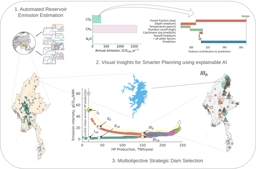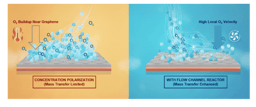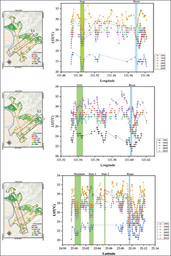Wind power has become a crucial renewable energy source for mitigating climate change, with global onshore and offshore installations reaching 117 GW in 2023. To achieve the United Nations' climate goals, annual growth must accelerate to 320 GW by 2030.
Uncertainties in wind power assessment
Wind Power Density (WPD), a metric proportional to the cube of wind speed, is essential for quantifying wind energy potential at any given location. WPD provides a standardized measure for comparing wind resources, regardless of turbine specifics. Key factors influencing WPD include spatial resolution, temporal resolution (∆t) of wind data, and air density. Among these, ∆t has a significant impact due to the cubic relationship between wind speed and WPD. High-speed wind events, which contribute disproportionately to WPD, can be smoothed or lost with coarser ∆t, leading to substantial underestimations. For example, monthly averages can underestimate total wind power by up to 48% compared to hourly data, and daily ERA5 data can underestimate global offshore wind power by 10-30% relative to hourly estimates.

Key findings of the study
This study uses wind speed data from multiple sources, including high-resolution observations, reanalyses, and CMIP6 models, to investigate the impact of ∆t on WPD calculations. Here we show that using daily ∆t results in an average underestimation of 35.6% in global onshore WPD compared to hourly ∆t. This discrepancy arises from the exponential decay of WPD with increasing ∆t, reflecting the intrinsic properties of wind speed distributions, particularly in regions with weaker winds. To address this, we propose a calibration method that introduces a correction coefficient to reduce biases and harmonize WPD estimates across temporal resolutions.
Implications for future wind energy sector
Applying the method to future wind energy projections under the Shared Socioeconomic Pathway 585 scenario increases global onshore WPD estimates by 25% by 2100, compared to uncorrected daily data. These findings highlight the effectiveness of calibration in reducing uncertainties, enhancing WPD assessments, and facilitating robust policy action toward carbon neutrality.
Reference
Hou, C., Xu, Z., Karnauskas, K.B. et al. Detecting and calibrating large biases in global onshore wind power assessment across temporal scales. Nat Commun 16, 3775 (2025). https://doi.org/10.1038/s41467-025-59195-2







Please sign in or register for FREE
If you are a registered user on Research Communities by Springer Nature, please sign in